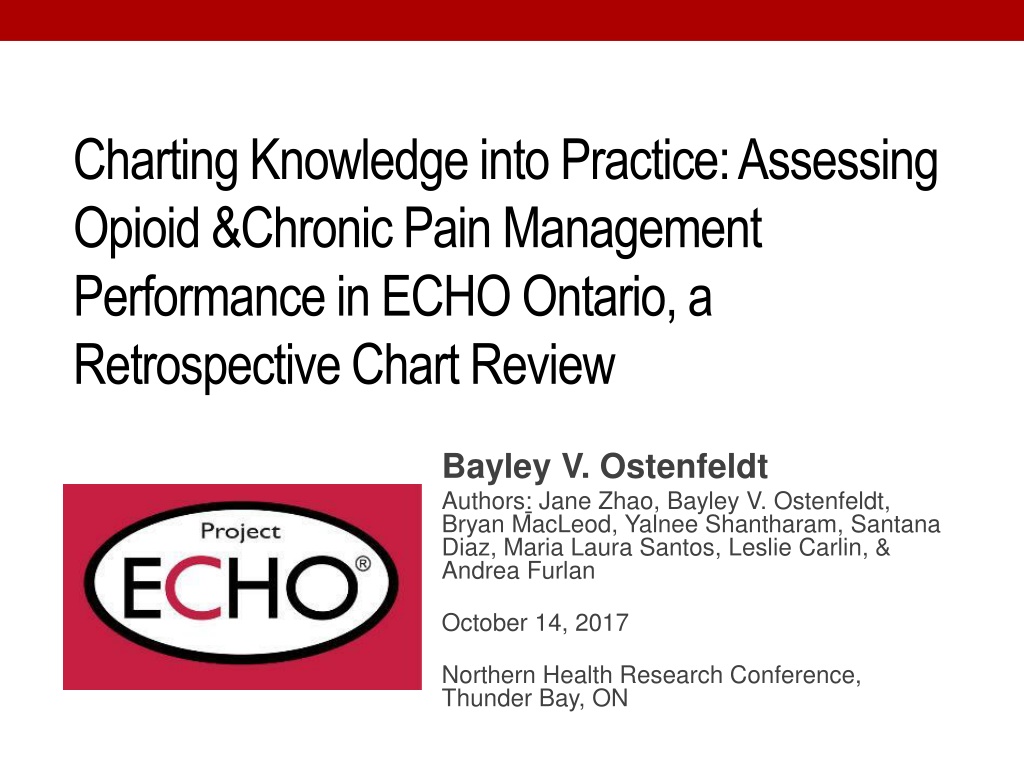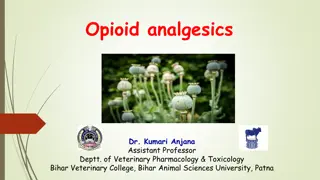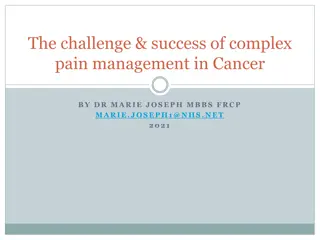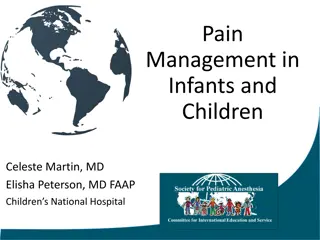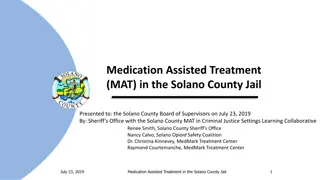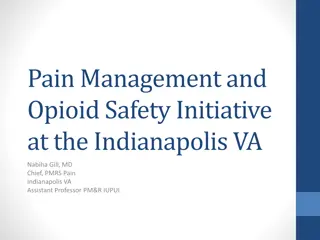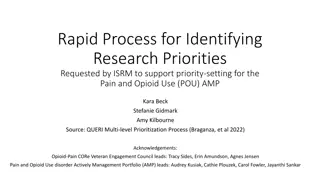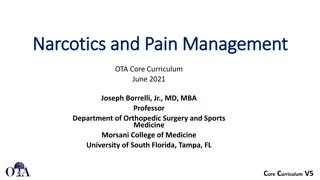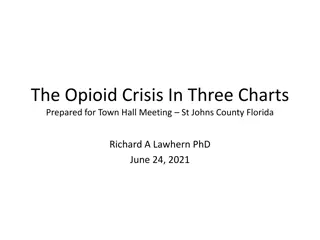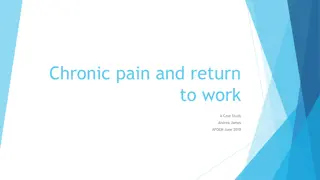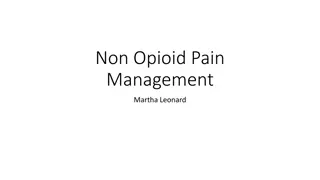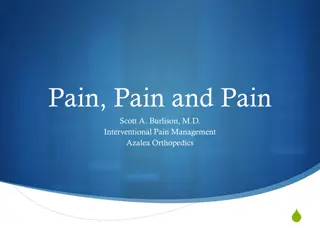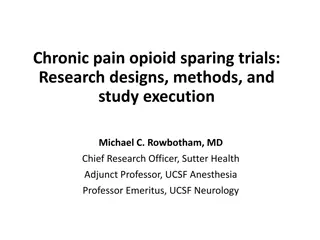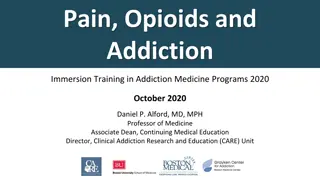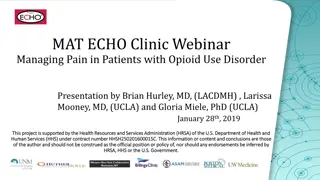Assessing Opioid & Chronic Pain Management in ECHO Ontario
This study delves into the effectiveness of the ECHO Ontario program in translating knowledge into practice for chronic pain and opioid management. It examines the impact, achievements, learning objectives, and challenges faced by healthcare providers and patients involved in the program. Through a retrospective chart review, the study evaluates the implementation of ECHO practices and its influence on clinician behavior and patient outcomes, shedding light on the benefits and limitations of this innovative approach in addressing complex chronic pain cases.
Download Presentation

Please find below an Image/Link to download the presentation.
The content on the website is provided AS IS for your information and personal use only. It may not be sold, licensed, or shared on other websites without obtaining consent from the author. Download presentation by click this link. If you encounter any issues during the download, it is possible that the publisher has removed the file from their server.
E N D
Presentation Transcript
Charting Knowledge into Practice: Assessing Opioid &Chronic Pain Management Performance in ECHO Ontario, a Retrospective Chart Review Bayley V. Ostenfeldt Authors: Jane Zhao, Bayley V. Ostenfeldt, Bryan MacLeod, Yalnee Shantharam, Santana Diaz, Maria Laura Santos, Leslie Carlin, & Andrea Furlan October 14, 2017 Northern Health Research Conference, Thunder Bay, ON
Bayley V. Ostenfeldt Relationships with commercial interests: NONE Potential for conflict(s) of interest: NONE
Learning objectives 1. Understand the basic principles of the ECHO model and the goals of the ECHO Ontario Chronic Pain and Opioid Stewardship program 1. Cite data supporting the impact of the ECHO Ontario Pain program on clinician behaviour 1. Overview of clinical benefits to be expected from ECHO attendance
Background ECHO Ontario Pain and Opioid Stewardship Launched in June 2014 Content of chronic pain: common, complex disease managed mostly in primary care
ECHO Pain Achievements 147 ECHO sessions to date 12-member interprofessional hub 369 individuals signed-up for ECHO 7,000 + hours of medical education provided 3,500 + of CME hours granted 4 Hands-on training workshops conducted with 109 learners
Family MD on Chronic Pain Patients I would say that my chronic pain patients, I don t have a huge number, they are my most challenging patients and I ve got their faces in my brain. And [sic] my top three probably take more brain and mental energy than the next 500 most challenging people. I often feel helpless They have seen all the specialists and the specialists had sent them all back to me with not a lot [sic] of help - MD, rural Ontario
Chart review - Introduction Previous studies suggest ECHO can be effective for knowledge translation This study investigates KT from the ECHO program into implementation into practice
Chart review - Methods HCP Inclusion criteria: attended at least 4 ECHO sessions, able to obtain consent from 5 to 10 patients for whom they prescribed opioids for chronic pain Patients were being treated by a HCP who had attended ECHO Analysis: pre- and post-ECHO comparison of data related to: number of visits to healthcare provider, pain, function, sleep, mood, prescription of opioids and non-opioids, recommendations for non-pharmacological management and urine drug testing. Goal of 100 charts
Chart review Preliminary Results (n = 14) PATIENT DEMOGRAPHICS Sex Patient Age 57% Female 43% Male 7% 40-49 50-59 43% Rurality 60-69 21% 71% Urban 29% Rural 70-79 29 %
Chart review Preliminary Results PAIN DIAGNOSES Migraines 13% Neck Pain 13% Abdominal Pain Shoulder Pain 27% 20% Back Pain Knee Pain 27% 67% CRPS 7% Fibromyalgia 7% COMORBIDITIES 40%with comorbid Sleep Disorders 53%with comorbid Mental Health conditions
Chart review Preliminary Results PRACTICE CHANGES 25% reduction in number of visits to HCP 21% increase in discussion around pain interference with the patient s functional status (mood, sleep, etc.) 36%tapered opioids Post-ECHO (decrease dose or eliminated altogether) 21% reduction in dangerous polypharmacy (benzodiazepine + opioids, CNS depressants + opioids) 29% increase in Urine Drug Screening in opioid-related management 36% increase in recommendation to stay active (walking, gym membership, etc.)
Chart review - Conclusions Documented implementation of knowledge into clinical practice at one-year following ECHO attendance Further work aims to review our full sample of charts, refine the chart review tool s sensitivity to change, and to investigate patient-level outcomes
Discussion Challenges Physician recruitment Patient retention All data was collected in North Western Ontario Your experience, thoughts?
Acknowledgements: Research funding is made possible by the Ontario MOHLTC, CIHR, & NOAMA. For more information: www.echoontario.ca @EchoOntario & @PainResearchNWO
